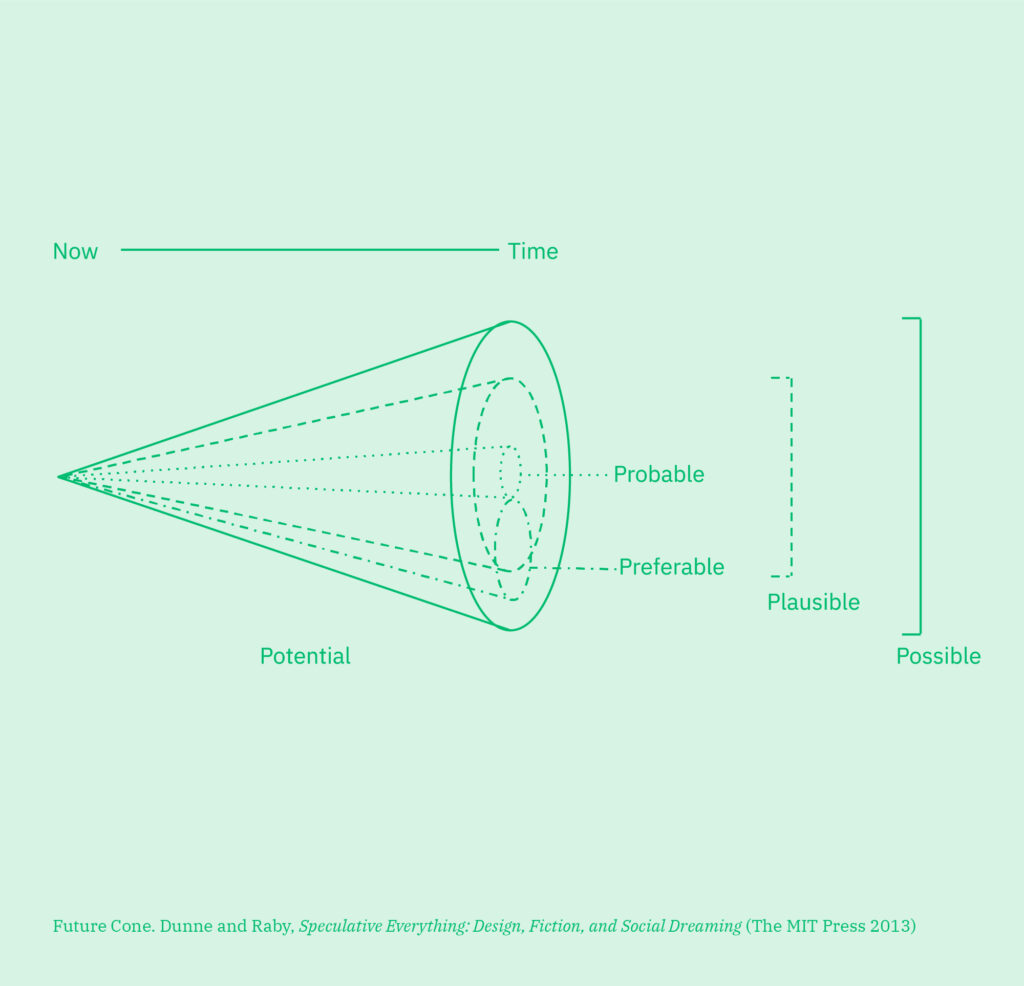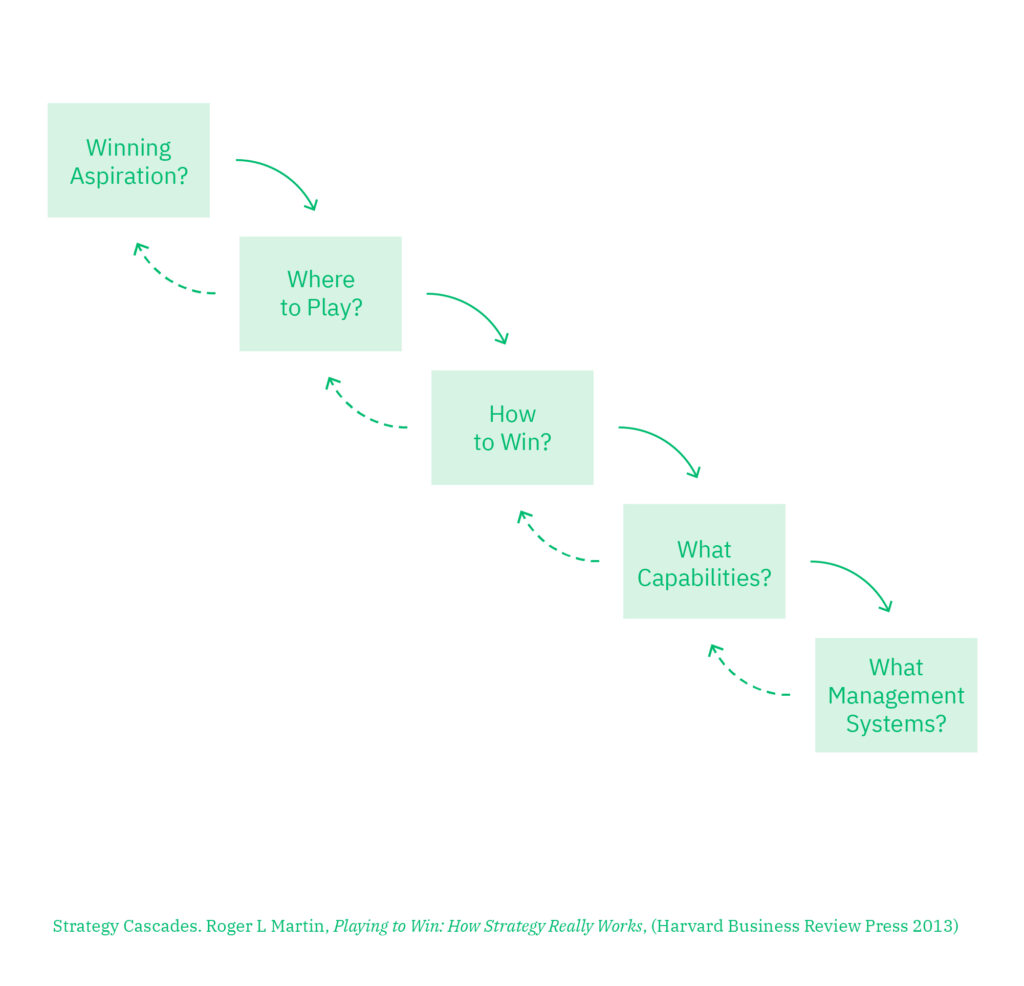When asked what our company does, I often respond by saying that we’re an “interdisciplinary design and strategy innovation studio.” I know, it’s a mouthful. But it feels like the most accurate description of what we do. Being accurate doesn’t always mean more clear. I think most people on the receiving end of that description focus on what feel like more tangible words: design and innovation. And although I don’t think that’s a bad place to focus, it doesn’t really get at the thing we are most interested in: strategy. But what do we mean when we use that word?

From our perspective, the work of strategy is about, as Max McKeown posits, “shaping the future.” How can we, with limited resources, in an unpredictable world, move towards what speculative designers call a “preferable future”–out of all things possible, what would we prefer our future to look like? Following that definition, we work to answer a series of questions foundational to creating a decision making bias…allowing us to prioritize decisions that support our strategy versus other goals.

Lately—and because we’re big fans of Roger Martin’s The Design of Business—we’ve been starting with the strategy cascade for those foundational questions. Although it’s a deceptively simple place to start, the answers (or lack of current answers) provide real insight into an organization’s current state. Consider the following:
– What’s our winning aspiration? – What’s the purpose of our company, and what is our vision and primary goals?
– Where to play? – Who are the people we want to serve?
– How to win? – What are the products/services we want to offer?
– What capabilities? – What are the tools, process, partnerships and/or competencies required to achieve our goals?
– What management systems? – How are we regularly measuring our performance towards those goals?
But strategy is not just a set of words, it’s a set of actions too. I think when people hear “strategy” they think about strategic planning sessions that occur annually, but never lead to new decisions or new priorities. Dan Hill has written about the “matter” and “meta” of good, durable strategy. We often stop at the “meta”— the frameworks and theory around a strategy. But turning that strategy into “matter” – using the insights and priorities found therein to guide a real project or initiative — is an incremental and iterative opportunity to see if the strategy works. The ancient Greeks referred to this as Theory and Praxis: the process where a theory is embodied by practicing its ideas.
For companies that do not consider themselves strategic—but know their future may depend on it—I think these frameworks can be useful. They prompt needed conversations and suggest a particular kind of discipline. But, as the adage goes, “Every system (organization) is perfectly designed to get the results it gets.” If you’ve grown your business by being more opportunistic than strategic, these questions may feel too ephemeral, and certainly not directional.
If this rings true for you, we can help you answer these kinds of cascading questions and create strategies that enable better decision making from your teams.

